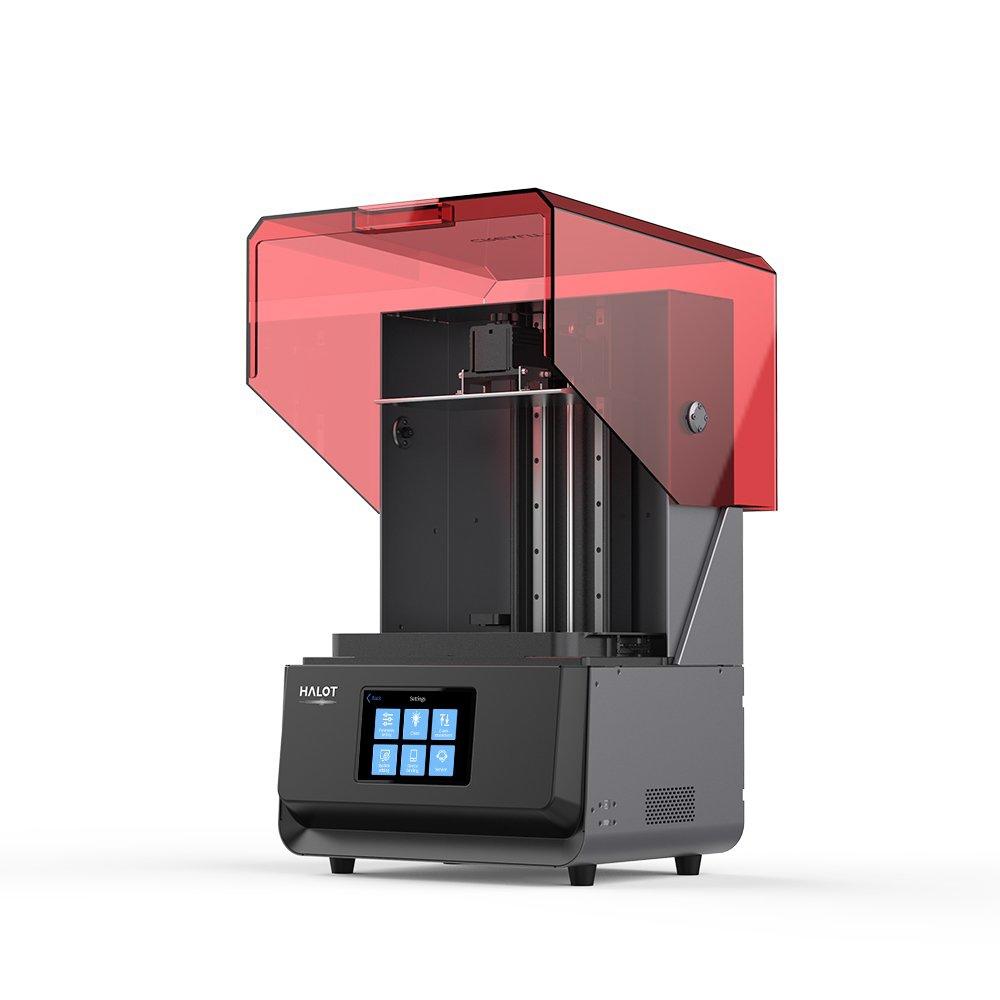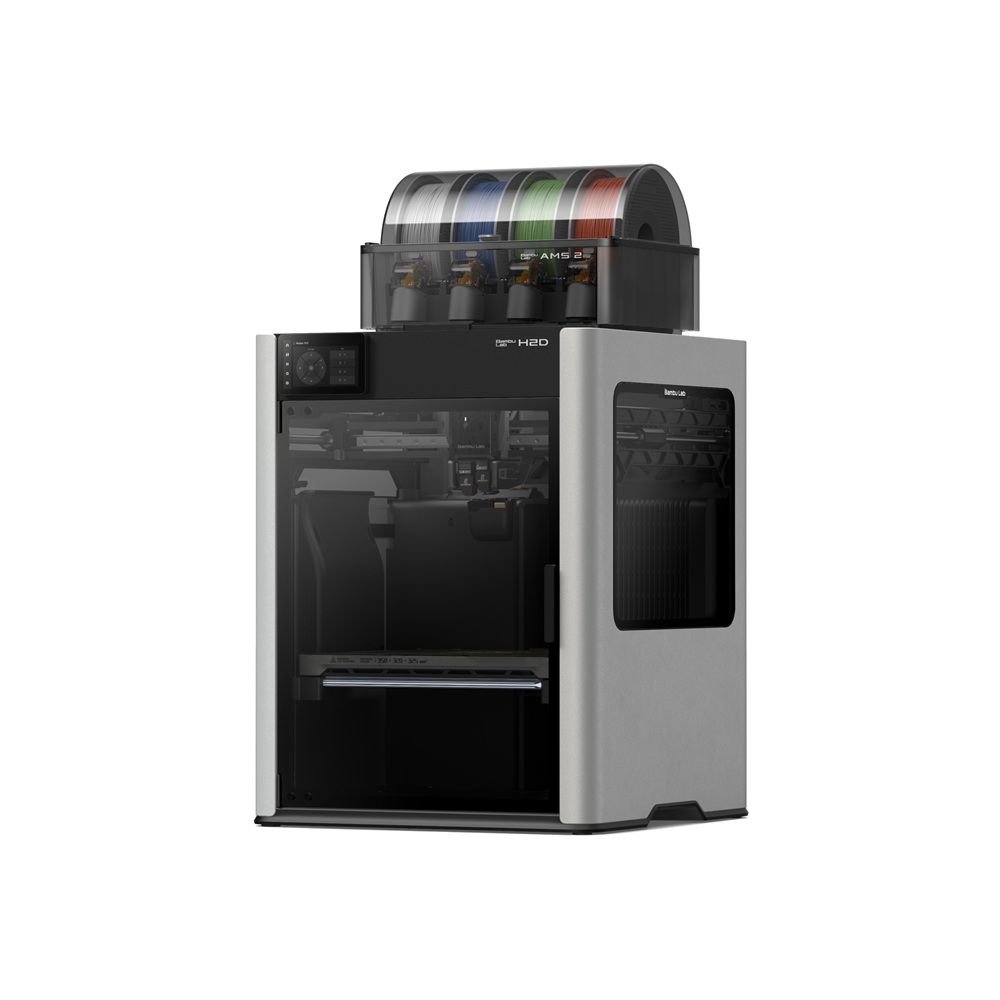Compare Halot Max vs H2D
Comparison between the best 3D printers
Choose the best 3D printer at the best price. The cheapest 3D printers are here.
Buy a 3D printer here with 3D Fila.
 |
 |
|
| Model | Halot Max[BUY Halot Max] |
H2D |
| Printing Material | Resin | Filament |
| Buy Resin for Creality 3D Halot Max | Buy Filament forBambu Lab H2D | |
| Estimated price | $3000,00 | $1899,00 |
| Manufacturer | Creality 3D | Bambu Lab |
| Release Year | 2021 | 2025 |
| Print Volume [mm] | 293x165x300 | 350x320x325 |
| Printer Size [mm] | 480x387x770 | 492x514x626 |
| Weight [kg] | 32,5 | 42,3 |
| Power Loss Recovery | NO | YES |
| Maximum Resolution [mm] | 0,03 | 0,01 |
| Processor | ||
| Display | Display touchscreen 5'' | Touchscreen 5'' |
| Power Supply | ||
| Connectivity | SD / USB / Wi-Fi | Wifi, Bambu bus, Cartão SD |
| Operating systems | Windows, Mac, Linux | Windows, Mac, Linux |
| Date of registration in the system | 2022-11-04 | 2025-03-31 |
| Release date | 2021 | 2025 |
| Extra features | The Halot Max printer stands out for its large print size (293 x 165 x 300 mm) and uses SLA technology. It has an integral light source for improved accuracy and a strong core with an advanced operating system. Its Z-axis module ensures high precision, supported by efficient slicing software. The machine offers online OTA updates and boasts an adjustable layer thickness between 10 and 200 microns. Its XY-axis resolution is 3840*2160, with 0.05 mm accuracy, and an integral 405nm light source. The printer includes a 5" touchscreen and multiple connectivity options, such as USB, Creality Cloud, and HALOT BOX WiFi. With cutting-edge technology, the Halot Max is ideal for printing small models with uniform precision, thanks to its self-developed lighting system and stable printing mechanism, which includes dual linear guides, ball screws, and an intelligent brake system. | Bambu Labs H2D combines high-speed 3D printing with a chamber heated up to 65 °C, dual extrusion with automatic nozzle switching, an AMS for filament drying and exchange, and AI sensors that detect failures. It offers optional laser and digital cutting capabilities, features intelligent calibration through computer vision, vibration control, enhanced fire safety, and real-time camera monitoring. |
| Support for multiple colors and materials (AMS and CFS) | NO | YES |
Notes * |
||
| Cost-benefit | 5 / 10 | 7 / 10 |
| Hardware | 1.2 / 10 | 8 / 10 |
| Tela | . | . |
| Print volume | 3 / 10 | 4 / 10 |
| Performance | 9 / 10 | 5 / 10 |
| [BUY Halot Max] |
Conclusion |
| In comparing the Creality 3D Halot Max and the Bambu Lab H2D, several key factors stand out that can guide potential buyers in their decision-making. The Halot Max, while being a resin printer, offers impressive build quality and precision features such as a high maximum resolution and a robust SLA technology framework. Its print volume is adequate for moderately sized projects, and it is particularly well-suited for detailed small models. However, its lack of power loss recovery and lower flexibility in material usage may be seen as drawbacks. On the other hand, the H2D from Bambu Lab presents a more modern solution with its dual extrusion capability and advanced AI features that enhance usability and prevent printing failures. It also supports a larger print volume, making it versatile for a wider variety of projects. Furthermore, its superior cost-benefit ratio and excellent hardware scoring suggest a more innovative design that meets the needs of diverse users, including those who require multi-material printing capabilities. Ultimately, the decision between the two will depend on the user's specific needs; those focused on high precision and details may gravitate towards the Halot Max, while users seeking versatility, speed, and advanced features may find the H2D to be a more fitting choice. The price difference also plays a crucial role, with the H2D offering a more budget-friendly option without compromising on essential features. Thus, for a more well-rounded printing experience, the Bambu Lab H2D is likely the better investment overall. |

